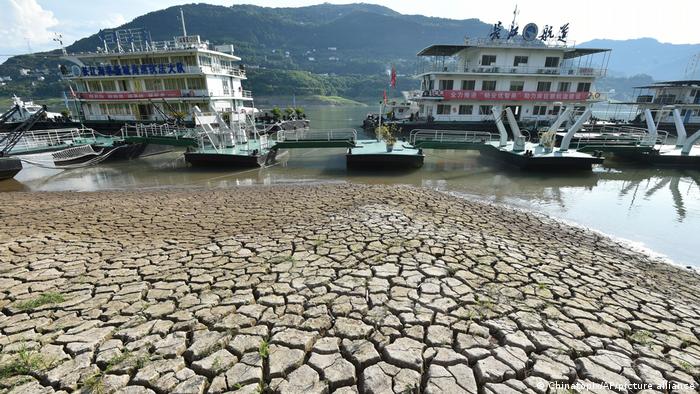Does artificial rain technology have the potential to have an adverse impact on the environment?
- Tram Ho
Artificial rain is said to be a temporary method that cannot be used in the long term due to concerns surrounding the ecosystem and the atmosphere.

Countries in the Northern Hemisphere are grappling with extreme heat waves, wildfires and extreme droughts, including China. Temperatures have regularly exceeded 40 degrees Celsius (104 degrees Fahrenheit) in Sichuan province over the past two months, causing the water level of the Yangtze River, Asia’s longest river, to hit a record low. The situation was assessed by China’s Ministry of Water Resources as “badly affecting the security of rural people’s drinking water, livestock, as well as the development of crops”.
In order to solve the long-standing drought, China decided to send giant drones to sow artificial rain in Sichuan. This decision of the nation of billions of people comes amid the worst heat wave in six decades.
The artificial rain-making system was studied in the 1940s by scientists at General Electric, then first used as a combat weapon by the US military. In the process, silver iodide, potassium iodide or dry ice will be shot into the clouds by jets or drones to form ice crystals. These crystals help the clouds condense, which in turn produces rain.
Of course, to create artificial rain, the sky itself had to have clouds available to shoot silver iods. This explains why Beijing is still struggling to make rain. The areas that need the most water on the mainland currently do not have enough clouds for rain to be planted. Humans cannot create rain clouds from thin air.

In order to solve the long-standing drought, China decided to send giant drones to sow artificial rain in Sichuan.
It is known that the first attempt to sow artificial clouds was made by American scientists in the 1940s. Today, this method is used in many different countries around the world, in which typically China. The country once planted artificial clouds to create rain before the 2008 Summer Olympics.
Russia also applies this method before major holidays to ensure they are not spoiled by the weather. In 2016, the country spent 86 million rubles (1.44 million euros) on sowing clouds to keep the May holiday dry.
In addition to China, the US is also using artificial clouds, most recently for western states particularly hard hit by drought, such as Idaho and Wyoming.
However, the artificial rain-generating system is controversial because of its negative effects on the environment. Many experts are also concerned about whether sowing clouds is really a good idea, because if they can bring rain to one area, it will not be able to bring rain to another area.
“If you create rain, you are invisibly reducing the amount of rain downstream,” said Harvard professor of applied physics David Keith, who specializes in science, technology and climate research.

India is experimenting with artificial rain
“Large-scale clouding is a dangerous experiment that can be out of our control and lead to undesirable consequences,” said Jose Miguel Vinas, meteorologist with Meteored, a Spanish company. weather website operator said. “If we want to reduce the impact of droughts or hurricanes in the face of global warming, we should invest in adaptation and mitigation measures.”
In addition, according to agricultural expert Kondala Murali Mohan, artificial rain technology will lead to ocean acidification, depletion of the ozone layer and an increase in the concentration of CO2 in the atmosphere.
“Creating artificial rain is only a temporary method that cannot be used in the long term,” Murali said.
However, in response, Chinese meteorological agencies and researchers have affirmed that artificial rainmaking technology does not have a bad impact on the environment. Rain-making chemicals are often sprayed in large areas, so the silver iodine content is only very small, not enough to destroy the ecosystem as many people think.
Source : Genk
